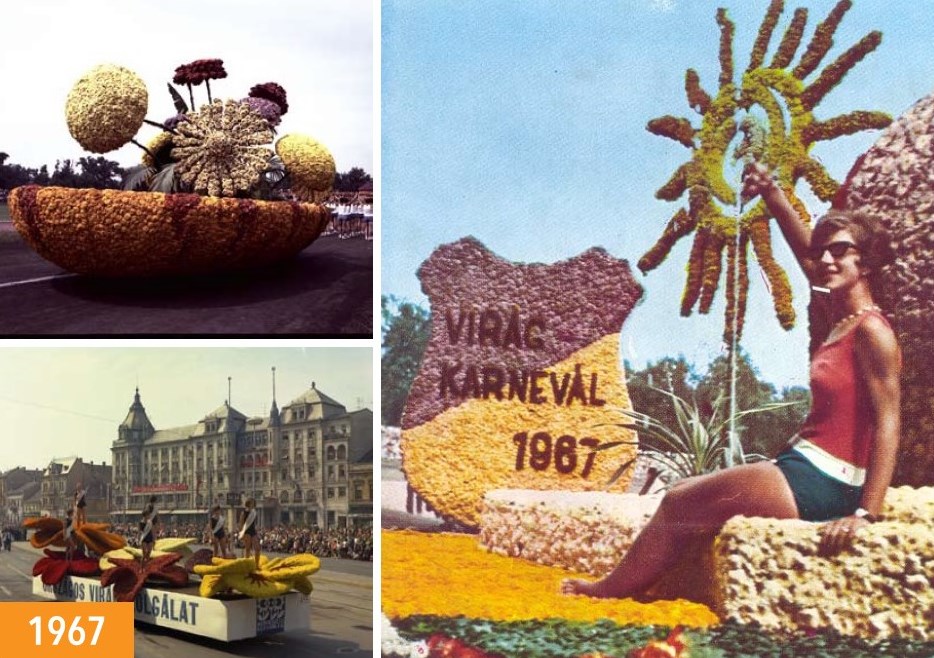STORY
20 August is Hungary’s national and state holiday – the anniversary of the canonisation of King Stephen I, the feast of St Stephen. But in Debrecen, it is also the day of the Flower Carnival. For the people of the city and for tourists visiting the city, it is now a natural day to be greeted by a real spectacle. It has been held almost every year since 1966.
“Bicycle flower parade and battle”
The literature refers to a flower carnival in Debrecen in 1905 as the origin of the tradition. However, recent research shows that this initiative was not without precedent: in August 1900, the board of the Debreczen Civic Cyclists’ Association held a meeting at which the members of the association decided to organise a national cycling competition in September on the association’s new track, the Debreczen Newspaper reported.
The highlight of the competition will be a “flower parade, which is planned to be a grand affair, and which they want to realise with a lot of excitement and pomp”. It was on this flower parade that the photo of a young man with a khaki moustache standing next to his bicycle decorated with a bush, taken in memory of the “bicycle flower parade and battle”, was taken. The photo was signed by the young man to Szigfrid Rédl, a railway inspector, and was taken in Jenő Knebel’s studio in Kossuth Street. The event was a great success, according to the Debreczen Inspector’s report of 17 September 1900. The race was held on Wednesday afternoon on the cycling track in the village of Mykonos. What made the race particularly interesting was the presence of several nationally renowned cyclists.
History of the 1905 flower carriage race
In May 1905, a call was made for the founding of the Debrecen Ambulance Association, which at that time was a disgrace in the city of 80,000 inhabitants. If someone had an accident, it took time to find a doctor. The Ambulance Association had already been in mourning for a decade and a half, even though a testamentary foundation had created the basis for it. A preparatory meeting was held and, with the world still as it was, the usual decision was taken to set up a committee. They were not idle, as on 14 June they held a flower float, the proceeds of which were earmarked for the purchase of an ambulance. The procession, consisting of 23 carriages, made its way along Simonyi Road, where tickets were required to enter as a spectator. At the head of the procession was the carriage of the town of Debrecen (pictured), with a driver and a buckwheat in the town colours on the bakon, and decorated with blue cornflowers and yellow acacia. The spectators showered the spectacular carriage with flowers. But it was not only flowers that fell, it was soon the constant horror of Debrecen events – rain. But no one was bothered, the audience stayed soaking wet and the decorated carriage procession marched on. The jury awarded the first prize to the Debrecen Town Carriage and the second prize to the Lawn-Tennis Society’s white flowered carriage. However, the owners waived the prize, and the carriage with daisies by Ernő Fisch and wild roses by Sándor Szunyogh were awarded the prize. The public prize – as we would say today – went to the red poppy carriage of Lieutenant Kállay. But the biggest applause went to the ambulance, which was also on parade. The proceeds were a tidy sum: 1600 crowns. It was more than six decades before flower floats were once again seen on the streets of Debrecen.



